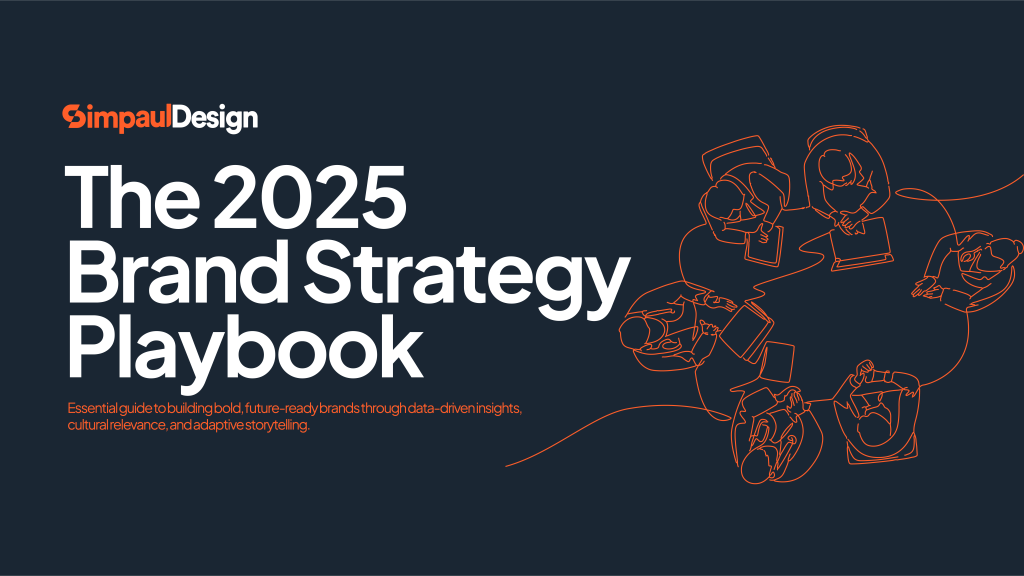The choice of typeface is one of the most important decisions you make when designing, for example, a flyer or a book cover. Besides the cover photo or illustration used, among the very first reading impression that a reader gets from a book is the choice of a typeface used. Therefore, the typeface used is important in preparing readers for the content and reading experience they would have.
How you choose your typography is likewise important as it aid conveys in conveying the message together with the content.
As there are numerous ways of choosing a typeface, in this guide we will cover the commonly used ways for typeface choice, a comprehensive overview of fonts: their different categories, how to use them, and even where to find free font downloads.
Related: Typography Made Simple: A Step-By-Step Guide
Before we get started there are a few grounds that we need to establish on typeface and fonts:
Typeface functionality
It is recommended, to consider the functionality of the typeface from the start. It is important to always think about function as well as the form of the typeface.
The intended message of a typeface to your target audience, shouldn’t be interfered with your preference for a given typeface.
So, any design decision on typeface selection must result from effective design thinking.
Pairing typeface families
The process of pairing typefaces is by defining the aim of the project together with the message that needs to be conveyed. The general result needs to be harmony and contrast.
Related Articles: Fundamental Tips You Need to Master in Logo Design
Testing Typeface
You wouldn’t know if a typeface is suitable until you’ve seen it at the right size and tested it. Therefore, always test your type to determine the relevant one to your project.
You need a context on how it will look and feel.
Test whether the character spacing, stroke weight, letter height, character shapes, and direction of the axis (either vertical or angled) are in order.
For any font you’re considering for passages of text that include both letters and numbers, try this test: Type out a capital I, a lowercase L, and the number one.
If two or more look identical, then your readers might find it strenuous over certain words or letter/number combinations.
A font or a typeface?
You may have heard the text you use in design projects referred to as both fonts or typefaces. Do the two terms mean the same thing?
Technically they’re different, but in most cases, they are used interchangeably.
Here is a guide that might help:
The typeface is the design; the font is how that design is delivered.
typeface + style + size = font
A font is what you use; a typeface is what you see.
The unique style or design of the alphabet that we identify by name – say, Helvetica or Arial would be considered the typeface.
To elaborate further, a typeface is used to define a family of fonts.
When those letters are varied in size or weight for example 10 point bold, that would be considered as a typeface. So 10 pt. Helvetica light and 24 pt. Times Helvetica Medium would be two different fonts, but the same typeface.
Font Types Classification
In this guide, we will focus on four basic font categories that will be helpful to understand when you’re going about choosing a suitable font, combining fonts for your design project, or discussing your type choices with other people.
There are many classifications, each with their own historical and technical definitions. Some classifications include Old Style, Blackletter, or Humanist.
Serif
Serif fonts have a small extra stroke ‘tail’ or lines attached at the main vertical and horizontal strokes of some letters. They’re generally considered much easier to read in long copy and printed works due to their distinctive nature of typeface.
The common serif typefaces examples include Times New Roman, Trajan, Georgia, and Garamond.
Sans-Serif
‘Sans-serif’ literally means ‘without serif’ – these fonts don’t have the extra stroke at the ends of letters.
Sans serif fonts have been adopted mostly on the web block text, blog posts, and web pages. The reason behind it feels more modern and looks great even at lower screen resolutions.
Script
Scripts are what we might think of as cursive- or handwriting-style fonts.
They are more based on varied fluid strokes. Script fonts come in many different styles; elegant, fun and casual, to even hand-drawn.
Decorative / Display
When you hear a font categorized as decorative, display, or novelty, it all means literally that – the font is meant to get your attention. This font classification is often more unusual in appearance and should only be used for a specific effect or purpose.
Why the font choice is important
Different occasions call for different apparel.
It will look absurd for you to wear a bathing suit to a job interview; likewise, you wouldn’t want to wear a suit and tie during your vacation on the beach either.
There’s an element of appropriateness you consider.
Based the apparel you wear, people might make assumptions about your style, your personality, your socio-economic background, your age, or the kind of impression you want to make (rightly or wrongly).
Font choices also often set the tone for the whole design and can influence viewers’ feelings toward and interactions with your design.
Typography often provides the first impression that individuals weigh and judge the rest of the design by so your font choices need to be functional and appropriate.
Do the elements of your font clash, or do they complement each other? Are they effectively communicating the qualities you want to project?
These considerations are part of what makes choosing fonts such an important part of the design process, one that should be approached thoughtfully.
Related Article: Graphic Design Made Simple: A Step-by-Step Guide
How to Choose a Font
The Typeface Basics
Every typeface has its own mood or personality. It may be it’s serious, casual, playful, or elegant. You might need to determine what a particular font communicated and whether that fits with your design project.
In the case that the font is communicating doesn’t match the message of your overall design, then there will be a visual disconnect for the readers or users of your design.
So, your first concern in choosing a font for a project should be to match the message or purpose of your design.
Before you even start browsing through fonts, brainstorm on some of the qualities or characteristics that you want your design to communicate.
That way, when you’re choosing a font, you already have in mind what font you need to match with the context.
In the case you get stuck. Run an analysis, does the font support the qualities of my brand or complement the purpose of my design?
Consider the most effective font choice that does that.
Consider context and audience
When browsing fonts, it can be easy to get caught up in all the fun and interesting choices.
A rule to note is don’t let personal preferences get in the way. A font you might think is distinctive or stylish may not be useful or appropriate for your project or the audience your working for.
Where and how your design will be viewed should also be included in your font choices.
For instance, a business card design will need a font that’s easily readable at a small size. Or social media graphics, mostly viewed on mobile devices, would require fonts that display well on small screens.
Also who is viewing your design is important.
Who Is your audience or what is your demographic? Will your font choice resonate with them?
Think of functionality
More than the mood or character of a font, and the relation to context; suitability is more of a functional matter.
One of the most common mistakes that beginners make is not realizing what various font categories are most suitable for instance, body typefaces versus display typefaces.
Will the body typeface you’ve chosen actually work where you’re intending to use it? Will it be practical and easily readable in the context of your design?
Body typefaces – are used in body copy: book text, magazine or newspaper text, website content, any lengthy passages. These fonts are easy on the eyes and easy to read. It’s important that they? re not distracting, so users can easily skim or scan the text.
This is the category that fonts like Times New Roman and Arial fall into.
Display or decorative typefaces – on the other hand, are never suitable for reading at length. These are the type of fonts that scream, ‘Look at me!’
They come in various degrees of usefulness, from the bold, all-caps fonts that might be used for headlines, to the fonts that are very literal or obvious.
These types of fonts can be fun and have their uses, but good design, especially design intended for business or professional contexts, often has more subtlety than that.
It is important to remember, display typefaces differ from body typefaces in that they’re not easy to read at length and should be used sparingly and with purpose. If you have doubts about whether a certain font is suitable for your design, it’s always a safe bet to pick a more neutral font.
Note, display fonts can make a big impact when used in the right way, but when used incorrectly, they can make a design look busy and amateurish or completely unreadable.
Font readability
One of the ways to communicate graphically is through text in your design, so readability becomes an important quality in a font to make sure your audience can respond to your message.
How can you tell whether a typeface is readable, other than your own visual assessment?
There are a few tips to determine font readability:
Size You’ll want to choose a point size that fits your design context.
A business card will need a different-sized font than an event poster.
Designing something that might be viewed on mobile devices – social media graphics.
For instance, try and type a few texts using the font you’ve considered and then reducing the size. If it is still easy to read at a smaller size, then it will probably perform well on small screens.
X-height – The distance between the baseline of type and the top of the main body of a font’s lowercase letters.
In the case x-height is in proportion to the typeface capital letter it may improve readability even when it is at a smaller size.
However, it would be a challenge to read if the x-height and the capital letters cannot be distinguished. This makes it even more difficult between font cases.
Spacing – Changes in the spacing around the letterform so that it’s appropriate for your design are a huge factor in enhancing readability.
Spatial manipulation in type spacing can be a very important tool. In most cases, generous spacing improves readability.
Some fonts may need to have individual characters adjusted to help create better readability and a more aesthetically pleasing layout
Adjustments can be made from letter spacing/tracking (spacing between whole groups of letters in lines or passages of text) to kern (spacing between pairs of letters), and leading (vertical space between lines).
Font versatility
The most useful fonts come in a variety of weights (such as light, regular, medium, bold, or heavy) and styles (such as narrow, condensed, extended, or small caps).
Having all those options allows you to assign different styles of the same typeface to different functions within your design project, creating a very cohesive outlook.
As a designer, you need a few neutral fonts that adapt to various contexts. These types of fonts are basically serif or sans-serif fonts that can be used pretty anywhere because they don’t draw a lot of attention.
That’s why choosing a versatile font – especially if you’re planning on only using one typeface for your design project will make laying out an attractive, easy-to-navigate design a lot easier.
Some of the commonly used versatile fonts on the serif category include Georgia, Crimson Text, Droid Serif, and Merriweather. For Sans-serif, Franklin Gothic, Clear Sans, Roboto, Lato, Source Sans Pro, or Merriweather Sans are mostly preferred.
Pairing of Fonts
Choosing two or more fonts to use together can be tricky.
First how many fonts can you use while pairing?
From various design forums, some would say one font will do for most projects, others three is the maximum number you should include to avoid an overly busy or confusing layout.
While that’s a fundamental basis if new to design there are no rules at least.
Finding a font combination with a level of contrast that’s just right- Isn’t one instant thing, but is usually a combination of personal taste, practice, instinct, and observation.
You want the fonts to complement each other, but not be too similar and different, but so wildly different that they clash, here are some tips to get started:
Find font families: Look for font families known as ‘super-families’ that come with both a serif and a sans-serif typeface designed specifically to complement each other, along with a variety of weights and styles to choose from.
Each font has a unique approach or a recognizable aesthetic. As they share a certain look or structure that makes it easy to pair them.
Assign the task to each font: A chosen font needs to be different enough to create a clear visual hierarchy ? showing viewers where to look and what’s important. Assigning one sans-serif and one serif font are often enough to do this effectively.
Shared quality: Fonts that look significantly different but share something in common is more likely to work well together.
The font quality such as the letter height or width might be general proportions or have a common structure between fonts. This quality helps give your font combination a basic cohesion.
If interested in learning more about how to combine fonts, read more on 10 Golden Rules You Need to Master in Combining Fonts and Typeface Like a Pro.
Where to Find Free Fonts
There are plenty of sites that offer free font downloads. But when downloading fonts check the license.
Here are several free font sources to get you started:
1) Google Fonts: This is probably the best resource for fonts that are both free and licensed for commercial use. The fonts are free and open source and optimized for the web making beautiful type accessible for any project.
They can also be downloaded to your computer for use on print projects, though it’s a little hard to find where to do that.
2) 1001 Fonts: Currently has over 10,000 free fonts in 9,000 families available, that, like DaFont, are of varying quality. Includes a special section with free licenses for commercial-use fonts and offers a handy option to search by type/style/mood, decade and occasion.
3) Font Squirrel: It was created as a directory of free fonts for use on websites or desktops. It includes a selection of high-quality fonts that are searchable by classification or tag. The directory also has a feature to determine the font used from an image – A font identifier.
4) DaFont: An archive of over 25,000 free downloadable fonts. It is the public domain, and demo fonts are available. They vary in quality as anyone can submit a font they’ve created.
Most fonts are free only for personal use.
More Free Fonts Source For Download
These are sites have exclusive options to choose for your design. However, they aren’t dedicated exclusively to free fonts and aren’t extensive.
FontShop: A classy font foundry for buying fonts that offers certain weights and styles. Currently, they have a free font category for downloading quality free fonts. Unfortunately, you must create an account to download.
Fontfabric: A type foundry with high-quality fonts which stand in a unique class of their own. Currently with a small but varied selection of free, professionally designed typefaces for any designer project whether web, print, t-shirt design, logo etc.
Lost Type Co-Op: A Collaborative digital type foundry with trendy, unique, and vintage-style fonts. The font is for personal use and priced accordingly for commercial use.
Conclusion
The guide provides a basis for typeface and fonts with resources to choose appropriately and apply in your design projects. If you have any favourite typefaces or resources, feel free to share in the comments.
How do you choose a typeface for your design before implementation?





